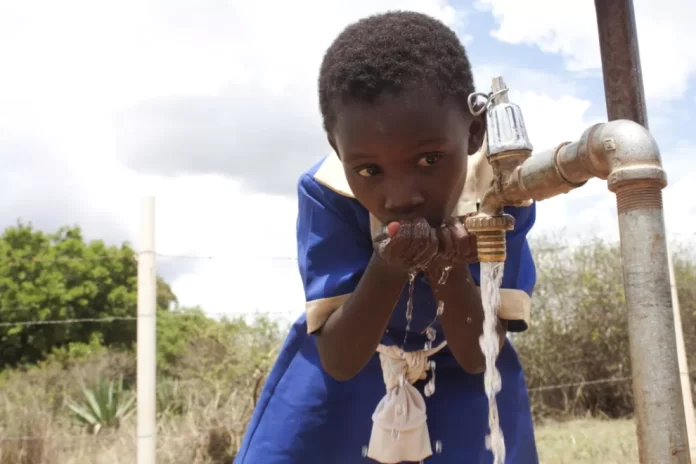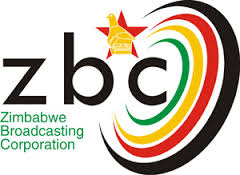Article by Kevin Tutani
Although the world is mostly covered in water, only 2.5% of its water resources are drinkable, whilst only 1% is commercially accessible. This shows the importance of diligently managing water resources, such that the little which can be extracted is utilized for social and economic benefit. The availability or lack of water, has a direct impact on matters to do with food security (agriculture), industrial activity, electricity generation, mining, sanitation (safe disposal of waste) and the country’s general economic performance. Without sufficient water supplies, human and animal lives are also at risk. It is on this basis that the country has its own National Water Policy, which guides government’s strategies on how to improve the availability of water in the country. The existing water policy in Zimbabwe, was drafted in 2012, and it is coordinated (managed) by an inter-ministerial grouping, which comprises officials from the following Ministries; Agriculture, Environment, Local government, along with personnel from the Zimbabwe National Water Authority (ZINWA) and the Environmental Management Agency (EMA).
This article serves to analyse the state of water resources in Zimbabwe and to provide possible ways to overcome existing challenges.
Statistics
As of 2012, Zimbabwe had the second-highest storage capacity of water, in Southern Africa. However, the country receives rainfall which is below the global average. This means that if methods to harvest water are not implemented, the land will not be able to sustain itself from rainwater. The average annual rainfall in Zimbabwe is around 650 mm, which is much below the world’s average of 1 000mm. The wetter areas such as the Eastern Highlands receive 1 500mm to 2 000 mm per year, whilst the lowlands are warm and dry with an average, annual rainfall of between 400 and 600 mm. The country’s dams and ground water, are enough to meet its demand. However, Bulawayo is an exception, as it cannot meet its demand independently.
As of the year 2000, the country had 200 000 hectares under irrigation. However, today, if efficient water utilization technologies (such as drip irrigation) and trans boundary resources (rivers shared with other countries) are utilized, Zimbabwe can have as much as 2 million hectares of land under irrigation. This is much higher than South Africa’s current capacity of 1.6 million, hectares under irrigation. It is also possible for some of the existing dams to be retrofitted (fitted) with hydroelectricity capacity, thereby increasing the country’s electricity generation capacity. Therefore, the country’s water resources provide a huge potential for economic development, through supporting agriculture, electricity supply, mining and other industrial activities.
The country’s consumption of surface water comprises; 82% attributable to agriculture, 15% consumed by households and industry, plus 3% utilized by the mining sector.
Generally, ZINWA and the country’s municipalities have had major challenges with managing the country’s water resources profitably. ZINWA’s revenue has taken a sharp downward trend, since the 1990s, whilst, as of 2012, 50% of municipalities were selling water, at a price below their costs of production (which includes purification and distribution). Due to the challenges facing ZINWA and the various local councils (municipalities), the county’s water infrastructure (such as dams and water distribution pipes) is not in the best shape. If the decline in the viability (profitability) of these institutions persists, then at some point, the country will lose much of its ability to provide a reliable supply of usable water to the different parts of society, including businesses. This could be disruptive to the country’s health systems, economy and social welfare.
The inability of water institutions such as ZINWA and EMA to operate viably, reduces the frequency and quality of dam maintenance, drives rogue households and businesses to increasingly pollute rivers and the country’s water courses (since effective regulation by EMA would be scarce) and limits the country’s ability to develop new water resources (such as dams, boreholes, etc). On the other hand, when local municipalities are not running profitable water distribution business models, they will lack the resources to maintain water distribution infrastructure, leading to an increase of water losses along the distribution pipes. This would also cause further financial losses for the municipalities, thereby creating a dangerous cycle of unsustainable operations.
How to supply more water
About 30% of water consumed in urban areas goes towards sanitation services (the hygienic handling of water used in washing, cleaning and also the disposal of human waste). Thus, stakeholders may need to discuss ways to redesign the country’s sewage management systems. It is concerning that in the cities, plumbing systems use drinkable water to flush human waste down the toilet. Considering that some neighbourhoods are failing to have access to council’s drinking water, that is worrying.
Sewage treatment plants are also problematic in that, they consume a lot of electricity and function on expensive equipment which can be difficult to replace. It is not uncommon for sewage treatment facilities around the world, to dump raw sewage in useful water courses when they become overwhelmed, due to power outages, floods, breakdowns or lack of capacity to treat the waste. This is why it is timely for local stakeholders to discuss ways to introduce toilets which can process waste at a household level.
Such toilets come in various designs. The Gates Foundation, for example, has funded the development of a toilet which can use electricity and only 1 litre of water to vacuum clean (like a vacuum cleaner) the toilet, whilst it turns the used water into a colourless and odourless liquid, through a heating process under conditions of high pressure. The liquid can then be disposed of on-site, in a hygienic manner, or re-used as water for the next flush. Several other toilet inventions which do not use electricity also use minimal water and natural processes, to breakdown waste into fertilizers and recycled water for further flushing (at a household level). Such toilet systems, which do not use conventional plumbing methods, are called non-sewered toilets, as they do not use the traditional sewage systems.
On that note, it is advisable for the Ministry of Local government to consider regulating that new settlements be installed with non-sewered toilets, in order to reduce the burden on the already struggling sewage treatment plants. This however, will need to be done in consultation with stakeholders. If feasible, older urban settlements may also be directed to transition to the non-sewered systems. That would mean that, hardware stores would be prohibited from selling spares for conventional toilet systems, at some point. In implementing such changes, a lot of drinkable water which was being used in sanitation, will then be saved.
Also, the country may need to change its perspective on wastewater (sewage water). Instead of treating it as pollution, there is an existing opportunity to begin treating it (sewage) as a resource. So, sewage can be used to recover phosphorus and nitrogen, which can be used as fertilizer for crops, whilst the treated clean water is returned to the country’s normal water courses. This means that sewage treatment plants should consider monetizing human waste as fertilizers for crops. Sewage can also provide electricity, if incorporated with biogas digesters. Also, if it (sewage) is supplied to plants named algae, the algae can in-turn be used to make biofuels such as ethanol, which can be used for blending (mixing) with petrol or diesel which is used in vehicles. Thus, due to the challenges of the current sewage treatment systems, water shortages and climate change, it is timely for the relevant authorities and stakeholders to begin consulting over the monetization of sewage systems.
Decentralized sewage power plants or fertilizer manufacturing facilities can be built at community level, as an experimental start towards the goal of utilizing all of the country’s sewage systems.
The Ministry of local government also needs to consider the implementation of “storm water harvesting” in urban areas. Storm water harvesting entails the creation of additional drains to a city’s drainage systems, so that the additional drains harvest as much water as possible from the existing drainage systems, and then diverts the water to dams created specifically for that purpose (of harvesting storm water). This would result in a higher harvesting rate of urban rainwater, which usually ends up in rivers, and is ultimately dispensed into the seas, or becomes inaccessible groundwater through penetration into the ground. Storm water harvesting would mean that urban areas would have more dams, pools, artificial wetlands and “mega” water storage tanks, than before. The harvested water can then be processed and used to irrigate public parks, crops, or other reforestation projects in the towns. Australia, for example, has successfully managed to roll out this mechanism (of storm water harvesting). In Zimbabwe, implementing storm water harvesting in areas such as Bulawayo, which is known to be unable to independently supply its water requirements, may need to be made a priority.
In the rural areas, rainwater is also lost through runoff into rivers. It can also penetrate the ground until it reaches inaccessible areas within the ground. In order to harvest more rainwater, agricultural extension officers may be dispatched to rural areas, so that they train villagers and commercial farmers on how to harvest rainwater for farming purposes. For example, they may be taught to build retention basins, which are ponds which can store rainwater for over 12 months. Retention basins also prevent flooding as they absorb excess rainwater during periods of heavy rainfall. Rural dwellers and commercial farmers can also build other water storage infrastructure such as sand dams, etc. As the villagers use the preserved surface water for irrigation, they will also be recharging (replenishing) ground water. That means when the surface water begins to diminish, they can then begin to make greater use of ground water resources, such as boreholes. The use of both surface and ground water therefore becomes symbiotic (mutually beneficial).
In areas with renewable energy potential (solar or wind) power plants can be established, with the aim of generating affordable energy for water desalination plants. The desalination plants can be used to purify wastewater from sewage systems, mines (some of which is toxic), other industries or ground water which is not readily suitable for human use. The plants can also be off-grid power plants, which do not necessarily have to connect with the national electricity transmission grid. That would imply huge cost savings since connecting to the national grid from some of the isolated areas (with renewable energy potential) requires investment in redesigning the grid.
Reducing wastage and demand
Harare City Council, for example, losses as much as 59% of its treated water to leakage and illegal connections. This is a huge difference from the situation in the UK, where losses are only 19%. In order to address this, the Council will need to continuously restore damaged water infrastructure, so that leakages are persistently sealed. Customers with huge debts should be disconnected, whilst post-paid water metres are installed at their premises, so that they (the metres) will only dispense water when the client is up to date with their payments.
Any savings through efficient irrigation technology , will also have a huge impact on water demand, since agriculture consumes as much as 82% of the country’s water. Drip irrigation, for instance, is known to reduce water usage by up to 40%, when compared with conventional irrigation systems.
Kevin Tutani is a political economy analyst- tutanikevin@gmail.com





